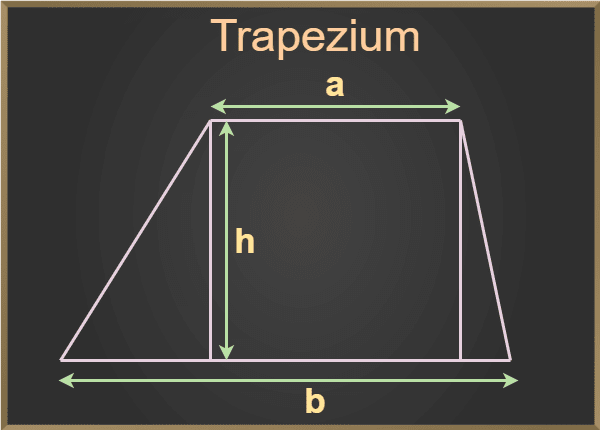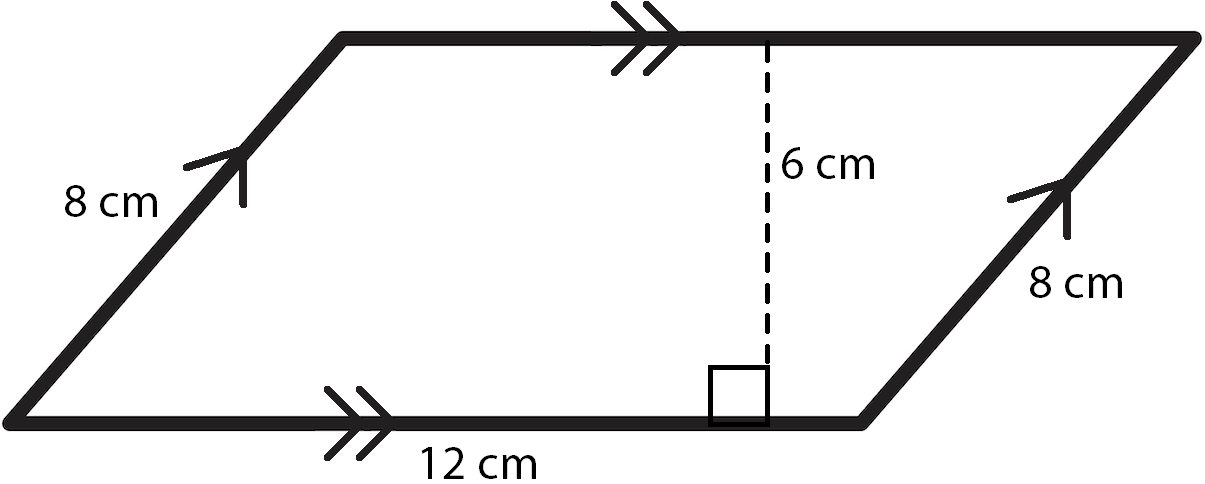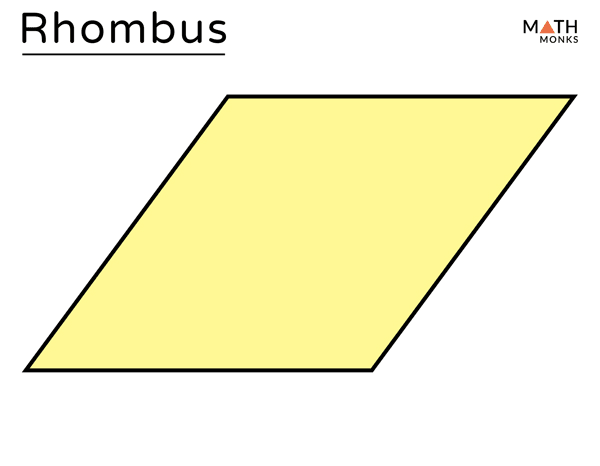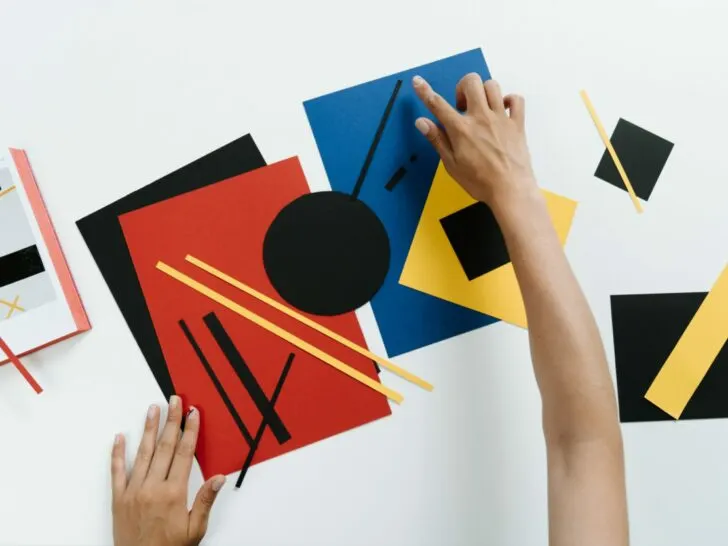We were introduced to various geometrical shapes as children in elementary school. They helped us build our mathematical foundations and helped us advance to higher-level geometry classes where we studied sophisticated equation analysis.
We are familiar with basic geometric shapes such as triangles, circles, squares, and rectangles. There are numerous complex shapes, including polygons, parallelograms, and others, if we take a closer look.
A polygon with exactly four sides is referred to as a quadrilateral. Additionally, this indicates that a quadrilateral has precisely four vertices and four angles. Different kinds of polygons exist.
The trapezium is a four-sided polygon with two parallel sides, whereas the trapezoid is a quadrilateral with two non-adjacent parallel sides. These terms are often used synonymously.
Polygons are easier to identify, as well as excellent tools for kids to understand shape dynamics.
Keep reading to know more about different types of polygons, and the main differences, and similarities between them.
What Are Geometric Shapes?
Any foundation, whether open or closed, with a specific shape and characteristics composed of lines, curves, and points is referred to as a geometric shape.
Squares, rectangles, circles, cones, cylinders, spheres, and so on are a few examples of well-known geometric shapes; each of these shapes has some unique characteristics that set them apart from other shapes.
The fundamental idea underlying comprehending geometric forms is that each shape has distinctive qualities and characteristics that set it apart from other shapes.
In everyday life, we are surrounded by a variety of fundamental geometric shapes, such as the triangle-shaped pizza slice, rectangle-shaped doors and windows, and many others.
Types of Geometric Shapes
A closed geometric shape is one that has both ends of an object or shape joined. There are two types of geometric shapes:
- Two Dimensional
- Three Dimensional
Let’s further break down their description, alongside some examples.
| Types Of Geometric Shapes | Description | Examples |
| Two Dimensional | Only the x-axis and y-axis are present in these 2D shapes. They are two-dimensional, flat constructions. | Triangle, Square, and Rectangle |
| Three Dimensional | Cube, Cylinder, Cone, and Cuboid | Cube, Cylinder, Cone and Cuboid |
What Is A Polygon?

A polygon is one more of the geometric shapes you should be familiar with. A polygon has only straight lines and no curves.
There might be no exposed components. A polygon in this context is essentially a general name for numerous shapes, including a square, triangle, and rectangle.
These are shapes with four sides and four corners, or vertices, and frequently two of the sides are parallel, meaning that no matter how far they stretch, their distance from one another remains constant.
Squares and rectangles are the most prevalent polygons, but there are also kites, parallelograms, and trapezoids.
It is also frequently referred to as a quadrilateral, which is a plane figure with four sides, four corners, and four vertices.
The quadrilateral has angles at each of its four vertices, or corners; and A, B, C, and D are the angles at the vertices of a quadrilateral ABCD. A quadrilateral generally has sides AB, BC, CD, and DA.
What Is A Trapezoid?
Trapezoid is an open, flat object which has four straight sides and one pair of parallel sides.
The trapezoid’s non-parallel sides are referred to as the legs, while their parallel sides are referred to as the bases; the legs of a trapezium can also be parallel. The parallel sides could be horizontal, vertical, or angled.
The term “altitude” refers to the straight line distance between two bases. The area is calculated by multiplying the two base lengths by the altitude.
Some claim that because the trapezoid only has one pair of parallel sides, they cannot be parallelograms. The sole definition is this one.
What Is A Trapezium?
A trapezium is a quadrilateral. Only one set of its sides is parallel; the other two are not. A trapezium may occasionally have two equal angles along one of its sides, known as an isosceles trapezium.

The base and legs of the trapezium are the opposing parallel sides, referred to as the base and non-parallel sides, respectively.
In general, trapeziums fall into one of three categories:
- Isosceles Trapezium
- Scalene Trapezium
- Right Trapezium
The area of a trapezium is equal to the sum of its four sides, which is equal to 12 times the sum of its parallel sides multiplied by the distance between them.
Difference Between Trapezoid And Trapezium
There is still disagreement over what distinguishes a trapezium from a trapezoid.
Trapezium has no parallel sides, but a trapezium is a quadrilateral in the UK with one pair of parallel sides.
A USA trapezium has one pair of parallel sides, but a USA trapezoid has no parallel sides. However, the USA uses the words to mean the opposite definitions.
In contrast to the trapezoid, which likewise has four sides but only has one parallel side, the trapezium has four sides but only has one pair of parallel sides that are opposed to one another.
The names trapezium and trapezoid are therefore equivalent, despite having differing spellings in various nations.
Other Polygons
Parallelogram

Parallelogram is a unique variety of quadrilaterals made up of parallel lines.
A parallelogram can have any angle between its neighboring sides, but it must have opposite sides that are parallel for it to be a parallelogram; the polygon is a parallelogram if the opposite sides of a quadrilateral are parallel and congruent.
A parallelogram’s diagonals cut each other in half, and its same-sided inner angles complement one another. The parallelogram is split into two congruent triangles by the diagonals.
Rhombus

It is the only parallelogram in which all sides are equal and the diagonals meet at a 90-degree angle.
This is a rhombus’ fundamental characteristic. A rhombus has a diamond-shaped form. Consequently, it is known as a diamond.
A square and a rhombus have the same amount of sides. The opposing angles are divided by the diagonals of the square, which are likewise perpendicular to one another.
There are four interior angles in a rhombus, and they add up to 360 degrees.
A rhombus has adjacent angles that are supplementary and adjacent angles that are equal to one another.
Conclusion
- Any two-dimensional shape made of straight lines is a polygon. These are all excellent instances of polygons, including quadrilaterals, triangles, and pentagons.
- While a trapezium in the US is a four-sided polygon with no parallel sides, a trapezium in the UK is a four-sided polygon with exactly one pair of parallel sides, and a trapezoid in Canada is a special kind of trapezoid with at least one pair of parallel sides.
- A trapezoid is a (convex) quadrilateral having two (non-adjacent) parallel sides, according to another definition. In contrast, a trapezium (in the modern sense) is a four-sided polygon with two parallel sides.

